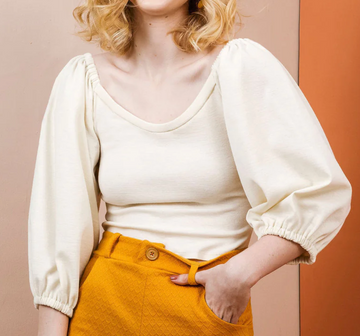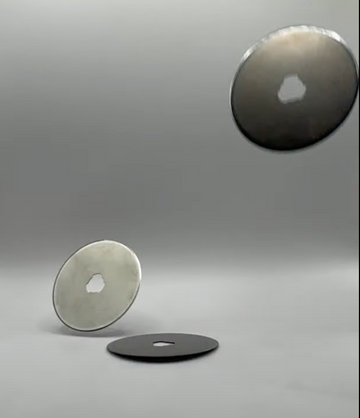There’s something comforting about pulling out a pattern from Butterick, McCall’s, Vogue, or Simplicity—the "Big 4" of the sewing world. They’re reliable, easy to find, and, for me personally, they fit. Like, really fit. I know it’s not everyone’s experience, but I fall right into their standard sizing and rarely need to make adjustments. When I do, it’s minor. That’s gold when you're eager to get sewing. Plus, it means I basically never have to make a mock-up! Which, honestly, for me, would be a barrier to sewing. I have huge respect for those who mock up before every project, but I don't think I'd ever have fallen in love with this hobby if I had to test everything before making the real thing.
THAT BEING SAID...
Lately, I’ve also found myself dipping into the world of small and indie pattern designers and loving a lot of what I find there, too! Unique silhouettes. Modern styles. Niche patterns I didn’t even know I wanted (hello, cottagecore aprons and quilted jackets).
That said, as this space grows, so does the noise. With AI making it easier than ever to whip up a pattern and a product listing, there are a lot of new designers out there—and not all patterns are created equal. Some are absolutely brilliant. Others… not so much.
So how do you tell the difference?
What to Look for in a Legit Small Pattern Designer
If you're venturing outside the Big 4, here are a few things I always check before I click “Buy”:
1. Clear and Complete Instructions
If the product listing doesn't show photos or samples of the instructions, that's a red flag. You want step-by-step guidance, ideally with illustrations or photos. Bonus points for links to sew-along videos or blog tutorials.
2. Tested by Real Sewists
Look for mentions of pattern testers—actual people who sewed the pattern before it launched. This usually means the designer collected feedback and worked out the kinks. Some even show tester photos, which can give you a better sense of how the design looks on different bodies.
3. Fit Information and Finished Garment Measurements
A legit pattern will give you more than just size numbers. It’ll include finished measurements, stretch fabric recommendations (if relevant), and notes about ease. That transparency helps you avoid surprises when you try it on.
4. Active Support or Community
Check if the designer responds to questions, either on their website, Instagram, Etsy, or a Facebook group. A pattern creator who’s available to help is one who stands behind their product.
5. Detailed Product Photos
If all you see are 3D mockups or AI-looking models, be cautious. Real sewn samples, ideally on a few different body types, show the designer has actually made the garment themselves.
6. Seam Allowance Info
You’d be surprised how many patterns leave this out. A good designer will tell you exactly how much seam allowance is included—or if you need to add your own.
7. Good Reviews
This one’s simple, but effective. Read what others say, especially those who mention their sewing skill level or any issues they had.
In the End…
There’s room for both worlds in my sewing room. I love the Big 4 for their consistency, their tissue-paper nostalgia, and the fact that I can pick up a pattern at JoAnn’s during a sale. But I also love supporting small designers who are passionate, creative, and pushing sewing into new territory.
Just like in quilting or fabric shopping, it’s all about knowing what you’re getting—and finding the right tools to bring your next project to life.
Happy stitching! 🧵
-E






